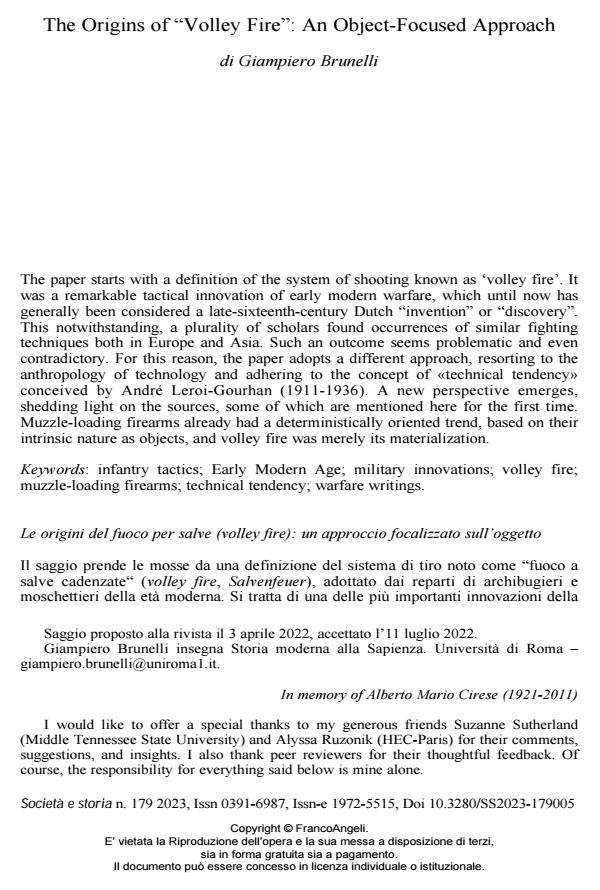The Origins of "Volley Fire": An Object-Focused Approach
Journal title SOCIETÀ E STORIA
Author/s Giampiero Brunelli
Publishing Year 2023 Issue 2023/179
Language English Pages 22 P. 91-112 File size 167 KB
DOI 10.3280/SS2023-179005
DOI is like a bar code for intellectual property: to have more infomation
click here
Below, you can see the article first page
If you want to buy this article in PDF format, you can do it, following the instructions to buy download credits

FrancoAngeli is member of Publishers International Linking Association, Inc (PILA), a not-for-profit association which run the CrossRef service enabling links to and from online scholarly content.
The paper starts with a definition of the system of shooting known as ‘volley fire’. It was a remarkable tactical innovation of early modern warfare, which until now has generally been considered a late-sixteenth-century Dutch "invention" or "discovery". This notwithstanding, a plurality of scholars found occurrences of similar fighting techniques both in Europe and Asia. Such an outcome seems problematic and even contradictory. For this reason, the paper adopts a different approach, resorting to the anthropology of technology and adhering to the concept of «technical tendency» conceived by André Leroi-Gourhan (1911-1936). A new perspective emerges, shedding light on the sources, some of which are mentioned here for the first time. Muzzle-loading firearms already had a deterministically oriented trend, based on their intrinsic nature as objects, and volley fire was merely its materialization.
Keywords: infantry tactics; Early Modern Age; military innovations; volley fire; muzzle-loading firearms; technical tendency; warfare writings.
Giampiero Brunelli, The Origins of "Volley Fire": An Object-Focused Approach in "SOCIETÀ E STORIA " 179/2023, pp 91-112, DOI: 10.3280/SS2023-179005